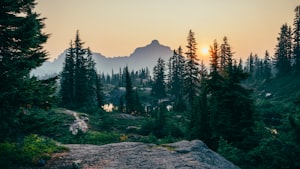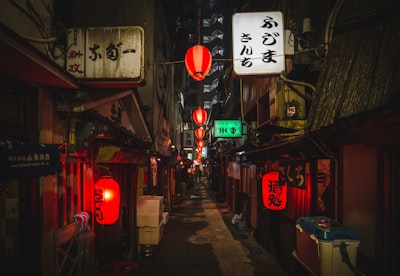Warsaw's Urban Nature Experience
Explore the city's abundant green spaces, from royal parks to riverside retreats and community gardens.
A Green City Reborn
Warsaw stands as a testament to urban renewal, with nearly 40% of its area dedicated to parks, gardens, and forests. Once known primarily for its historical significance, the city has transformed into a verdant metropolis where nature and urban life exist in harmony.
With over 70 parks, nearly 100 different garden squares, and extensive forested areas within the city limits, Warsaw offers residents and visitors alike an abundance of spaces to connect with nature. This green transformation reflects Warsaw's commitment to creating a livable, sustainable urban environment.

Royal Parks and Historical Gardens
The crowning jewel of Warsaw's green spaces is undoubtedly Łazienki Park, the former royal gardens spanning 76 hectares in the city center. Dating back to the 17th century, this magnificent park complex features:
Palace on the Isle
A neoclassical royal residence surrounded by water
Amphitheater
Open-air stage inspired by ancient Greek theaters
Chopin Concerts
Regular performances at the composer's monument
Botanical Garden
Collection of rare plant species and magnificent tree specimens
Another historical green space is the Saxon Garden (Ogród Saski), established in 1727 as one of the first publicly accessible parks in the world. This formal baroque garden features symmetrical pathways, fountains, and over 100 sculptures.
Did You Know?
Warsaw's Łazienki Park hosts free Chopin piano concerts every Sunday from May to September, allowing visitors to experience classical music in the same setting that inspired the composer during his time in Warsaw.

Łazienki Park
Warsaw's most stunning royal park complex, featuring palaces, monuments, and picturesque gardens.
Discover More
Saxon Garden
One of Europe's oldest public parks, featuring baroque design elements and the Tomb of the Unknown Soldier.
Discover MoreUrban Forests and Nature Reserves
Warsaw is unique among European capitals for its substantial forested areas within city limits. The Kampinos Forest (Puszcza Kampinoska), a UNESCO Biosphere Reserve, begins at the northwestern edge of the city and offers:
- Over 385 square kilometers of protected wilderness
- More than 200 km of hiking trails ranging from easy walks to challenging treks
- Rich biodiversity with elks, beavers, lynx, and nearly 200 bird species
- Unique landscape of sand dunes and swamps not typically found near urban areas
Within the city proper, Las Bielański and Las Kabacki provide forested escapes where residents can enjoy nature without leaving Warsaw. These urban forests serve as important ecological corridors and help maintain the city's biodiversity.

The Vistula River Corridor
The Vistula River (Wisła) flows through the heart of Warsaw, creating a natural blue-green corridor that has become one of the city's most beloved recreational areas. The western bank features developed boulevards with:
- Seasonal beach bars and cafés with lounge chairs and hammocks
- Paved cycling and walking paths stretching several kilometers
- Outdoor exercise equipment and children's playgrounds
- Cultural pavilions hosting concerts and events
The eastern bank remains largely undeveloped, preserving natural habitats and creating a striking contrast between urban development and wild nature. This area, known as Praga Beach, offers sandy shores where visitors can spot rare bird species while gazing at Warsaw's skyline.
Local Experience Tip
Visit the Vistula boulevards at sunset for a gathering of locals enjoying picnics, music, and the spectacular view of the sun setting behind the Old Town. Bring your own refreshments or visit one of the many seasonal pavilions for drinks and snacks.
Community Gardens and Urban Farming
Warsaw's green revolution includes a growing network of community gardens and urban farms that bring nature into densely populated neighborhoods. These grassroots initiatives transform vacant lots and underutilized spaces into productive green areas where residents can grow food, socialize, and connect with nature.
Notable examples include:
- Jazdów Open Garden - A community-managed garden in the unique wooden Finnish houses area
- Fort Bema Gardens - Allotment gardens surrounding a historic fortress
- Motyka i Słońce - An urban farm offering workshops and volunteer opportunities
These spaces not only provide fresh produce but also serve as educational centers where visitors can learn about sustainable urban living and traditional Polish cultivation methods.
Seasonal Green Warsaw
Warsaw's green spaces transform dramatically with the seasons, offering different experiences throughout the year:

Spring Warsaw
Cherry blossoms at Łazienki Park, magnolias in the University Library Garden, and thousands of tulips in Saxon Garden.

Summer Warsaw
Riverside beaches, outdoor concerts in parks, and the full bloom of the Botanical Garden's collections.

Autumn Warsaw
Spectacular foliage in Las Kabacki, mushroom hunting in Kampinos Forest, and harvest festivals in community gardens.

Winter Warsaw
Snow-covered palace grounds, ice skating in Park Agrykola, and peaceful walks through frosted landscapes.
Green Warsaw for Visitors
For those exploring Warsaw's natural side, consider these practical tips:
- Bicycle rentals - The city's Veturilo bike-sharing system has stations near most major parks
- Guided nature walks - The Warsaw Tourist Office offers seasonal tours focusing on the city's biodiversity
- Boat trips - See the city's green spaces from the Vistula River perspective with kayak rentals or cruises
- Park events - Check the city's cultural calendar for outdoor concerts, markets, and festivals in green spaces
Many of Warsaw's parks and gardens offer free admission, making them perfect for travelers looking to experience the city without spending much. The more extensive natural areas like Kampinos Forest can be reached using regular public transportation.








